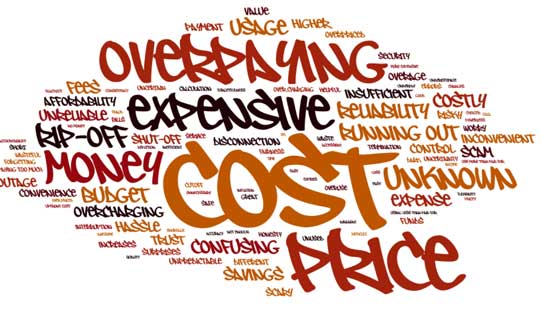EcoAlign, a strategic marketing agency focused on energy and environment, and DEFG, a management consulting firm specializing in energy, partnered in November 2013 to conduct 1,001 online interviews based on the Russell Research Omnibus Methodology. The project team worked with the members of the Pre-Pay Energy Working Group1 to finalize the survey instrument.
Pre-Pay as a payment option is part of a mega-trend that includes gift cards, reloadable debit cards and benefits cards. This mega-trend continues to intensify, with 62% of Americans having used some form of prepayment in 2013 as compared to 55% in 2012 and 49% in 2010. As such, when considering prepayment in all forms as simply a payment and cash management option, prepayment is definitely in the mainstream.
An important corollary to the above finding is that we actually think the number of Americans using some type of prepayment is higher than what has been self-reported in this survey. Companies frequently brand Pre-Pay transactions (e.g., iTunes card, Metrocard, EZPass, etc.), so they do not appear to be prepayment. A higher proportion of Americans are likely using prepayment, but are not aware of it.
Why is Pre-Pay increasing in use? Surveys point to the same conclusion: Americans are satisfied with prepayment. In 2013, 39% of Americans surveyed who have used prepayment were “very satisfied” and 36% were “somewhat satisfied” to make purchases or contract for services using prepayment. Younger and more mobile Americans were especially satisfied.
On the other hand, 61% of older Americans (55 years or older) were “very” or “somewhat satisfied,” preferring other payment options in relative terms.
As clearly seen in the graphic below, Pre-Pay energy is quickly approaching an inflection point of rapid implementation and adoption in the United States. The percentage of Americans interested in a voluntary prepaid energy option increased by 3% from 2012 to 2013, growing from 38% in 2012 to 41% in 2013. Since 2010, the “top two box” responses (“extremely interested” and “very interested”) increased 7 points, from 17% (2010) to 22% (2012) to 24% (2013).
Background
This is the fourth EcoPinion consumer survey report to address prepayment.(2) Prior reports have suggested that the spread of advanced meters has resulted in opportunities for new services, and that Pre-Pay electricity is a “killer app” for the “smart grid.” Prepayment allows consumers to pay for energy in advance and to monitor their usage and account balance through daily communications from their supplier. The daily information changes their behavior and facilitates energy management to help the home budget.
The second survey, limited to Texas and Arizona, was conducted in 2011, and provided insights around consumer awareness and acceptance of Pre-Pay electricity service. (Texas and Arizona represent the largest base of U.S. consumers currently use Pre-Pay electric service.) A top finding was that Texas and Arizona consumers strongly correlate Pre-Pay electricity with increased control and management, and the potential to use less energy and save money.
A 2012 survey focused on consumer perceptions and satisfaction levels with prepaid options in general, and examined awareness and acceptance of prepaid electricity. The findings reveal a significant number of Americans (38%) are interested in prepaid electricity, with younger adults, renters, and males most open to the new service. Additionally, the top reasons or drivers for choosing prepaid electricity have held steady: to closely monitor and reduce energy usage and to increase control over energy use and the household budget.
Pre-Pay energy, in fact, does lead to a significant drop in consumption, and consumer bills are lower as a result. Using consumer data obtained from Oklahoma Electric Cooperative, DEFG hired economist Michael Ozog, PhD to apply techniques widely accepted in the evaluation of utility-sponsored energy efficiency programs to measure the effect of prepayment on energy usage.(3)
The major finding is that participation in prepaid energy service resulted in an average reduction in energy usage of 11%.4 Recently, DEFG conducted another measurement and verification of Pre-Pay service in the Pacific Northwest and, again, found a significant reduction in energy usage. (Those findings will be released in Q1 2014.)
This current survey included several questions from the earlier surveys to identify response patterns from year to year.


